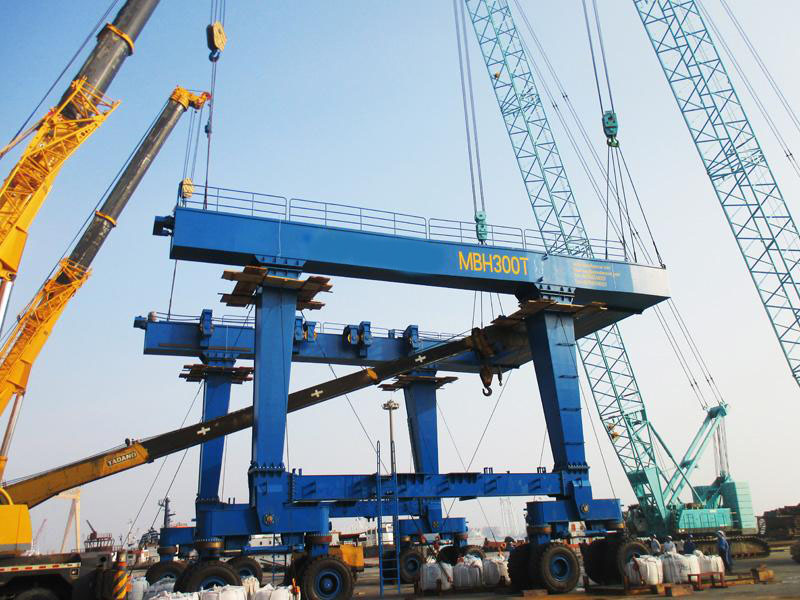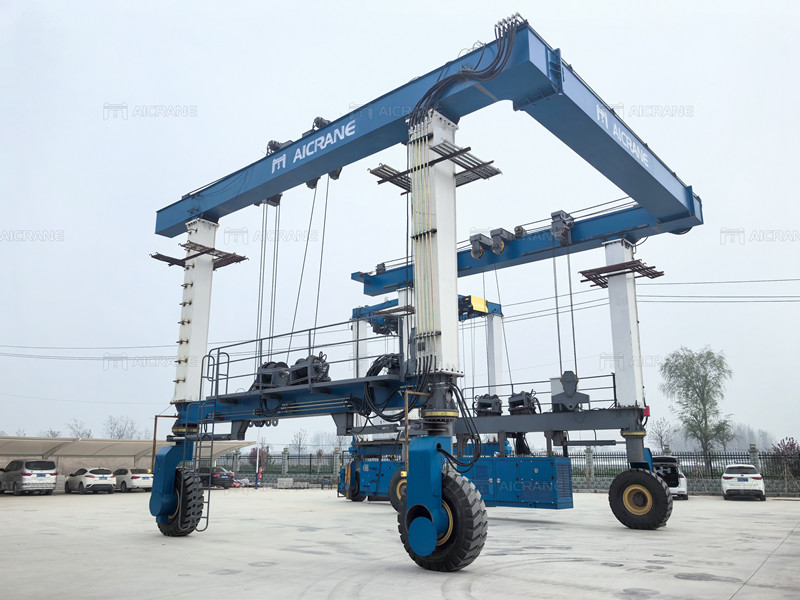Installing a marine boat hoist requires careful planning, consideration of various factors, and adherence to safety protocols to ensure efficient and safe operations. A marine boat hoist is an essential piece of equipment in marinas, boatyards, and repair facilities, used for lifting and transporting boats out of the water for maintenance, storage, and other purposes. This comprehensive guide will outline the key steps and considerations for installing a marine boat hoist, including site selection, preparation, installation process, and post-installation procedures.

Choosing the Right Location for Installation
Site Selection
The first step in installing a marine boat hoist is selecting an appropriate location. The ideal site should have the following characteristics:
Proximity to Water: The site should be close to the water to minimize the distance boats need to be transported. This reduces the time and effort required for operations.
Accessibility: The area should be easily accessible for boats and maintenance equipment. Adequate space for maneuvering and parking is essential.
Stability of Ground: The ground where the hoist will be installed should be stable and capable of supporting the weight of the hoist and the boats. Soil testing may be necessary to ensure ground stability.
Tidal and Weather Considerations: Consider the effects of tides, waves, and weather conditions on the site. The location should be protected from strong currents and heavy winds to ensure safe operations.
Environmental Impact: Assess the potential environmental impact of installing a marine boat hoist. Ensure compliance with local regulations regarding water and soil protection.
Infrastructure Requirements
Before installation, ensure the site has or can be equipped with necessary infrastructure, including:
Power Supply: A reliable power source is required to operate the hoist. Ensure the site has adequate electrical infrastructure to support the hoist’s power requirements.
Drainage System: Proper drainage is essential to prevent water accumulation around the hoist, which can affect its stability and operation.
Safety Features: Install safety barriers, warning signs, and lighting around the hoist to enhance safety for operators and bystanders.
Preparing for Installation
Site Preparation
Once the location is selected, prepare the site for installation:
Clear the Area: Remove any obstacles, debris, and vegetation from the installation site. Ensure the area is level and free from hazards.
Mark the Layout: Use stakes and markers to outline the exact position where the marine travel lift will be installed. This helps in aligning the hoist accurately during installation.
Excavation and Groundwork: If required, excavate the site to create a solid foundation. This may involve digging trenches for electrical cables, drainage systems, and footings for the hoist.
Foundation Construction
A strong and stable foundation is critical for the safe operation of a mobile boat hoist. Depending on the hoist’s design and specifications, the foundation may consist of:
Concrete Footings: Pour concrete footings at the designated spots to anchor the hoist. Ensure the footings are deep and wide enough to support the hoist’s weight and the loads it will carry.
Steel Reinforcements: Use steel reinforcements within the concrete to enhance its strength and durability. This is especially important for large hoists lifting heavy boats.
Anchoring Systems: Install anchor bolts or plates in the footings to secure the hoist. These should be aligned precisely to match the hoist’s base.

Installing the Marine Boat Hoist
Assembly of Components
With the foundation ready, proceed with assembling the marine boat hoist. This typically involves:
Erecting the Frame: Assemble the main frame of the hoist according to the instructions of manufacturer. This may involve bolting or welding together various sections.
Installing the Winch System: Attach the winch system, including motors, pulleys, and cables. Ensure all components are securely fastened and properly aligned.
Mounting the Control Panel: Install the control panel in a convenient location where operators can easily access it. Connect all electrical wiring and test the controls to ensure they function correctly.
Safety Checks: Conduct thorough safety checks to verify that all components are installed correctly and securely. Check for any loose bolts, misalignments, or defects.
Calibration and Testing
Before using the marine boat hoist, it is essential to calibrate and test the system:
Load Testing: Perform load testing by lifting a test load to ensure the hoist can handle the maximum weight it is rated for. This helps identify any issues with the winch system or structural integrity.
Operational Testing: Test all operational functions, including lifting, lowering, and moving the hoist. Ensure smooth and precise control over all movements.
Safety Systems: Verify that all safety systems, such as emergency stop buttons, overload protection, and limit switches, are functioning correctly.
Post-Installation Procedures
Operator Training
Proper training for operators is crucial for the safe and efficient use of the marine boat hoist. Training should cover:
Operating Procedures: Teach operators how to use the control panel, handle the winch system, and safely lift and move boats.
Safety Protocols: Instruct operators on safety protocols, including wearing appropriate personal protective equipment (PPE), conducting pre-operation checks, and responding to emergencies.
Maintenance Practices: Train operators on basic maintenance tasks, such as lubricating moving parts, inspecting cables and pulleys, and identifying potential issues.
Regular Maintenance
To ensure the longevity and reliability of the marine boat hoist, establish a regular maintenance schedule:
Inspection: Conduct regular inspections of the hoist, checking for signs of wear and tear, corrosion, and other potential issues.
Lubrication: Lubricate all moving parts, such as winch cables, pulleys, and joints, to reduce friction and prevent wear.
Repairs: Promptly address any issues identified during inspections. Replace worn-out components and repair any damage to maintain the hoist’s performance and safety.
Documentation and Records
Maintain detailed records of all installation procedures, tests, inspections, and maintenance activities. This documentation is essential for tracking the hoist’s condition, planning future maintenance, and ensuring compliance with safety regulations.
Installing a marine boat hoist involves careful planning, site selection, and meticulous execution of installation procedures. By choosing the right location, preparing the site adequately, and following best practices during installation and maintenance, you can ensure the safe and efficient operation of your marine boat hoist. Proper training for operators and adherence to regular maintenance schedules will further enhance the hoist’s reliability and longevity, making it a valuable asset for your marine facility.